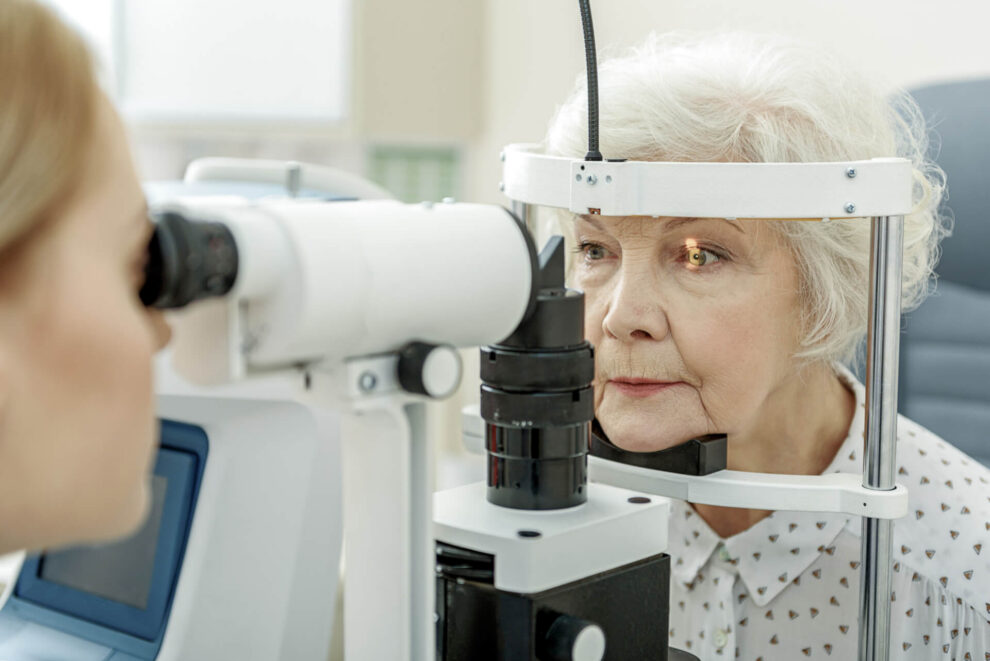Posted by: Kentucky Eye Institute in Vision Care

Right now, your vision is the best it’ll ever be. Unless you make some sort of surgical change, your eyes are going to get worse with time, not better.
The good news is, your eyesight getting worse is normal, and the bad news is, you can’t necessarily stop it.
Learn what changes you can expect over time, which procedures can treat age-related changes, and how to keep your eyes as healthy as you can, below.
Why is my Eyesight Getting Worse?
It’s only been in the last 50 to 100 years that humans have started living to seventy or eighty regularly. Before that, people would be lucky to live to fifty – the average life expectancy before the 1800s was just 40 years of age.
What does that have to do with your vision? Well, in that short period, our bodies haven’t biologically evolved to live longer yet.
Our eyes start aging out the older we get. There are things we can do to slow and treat the process, but our eyes weren’t made to see perfectly forever.
As you’ll see in more detail, that average life expectancy number (ages 30-40) is pivotal when it comes to vision changes.
The Life of Your Eyes
Did you know that infants don’t have clear vision when they’re born? Most can recognize face shapes, but we believe their vision is cloudy, and low in detail.
It’s not until about two years that children develop their full-fledged adult-like vision abilities. If you haven’t taken your child to the eye doctor by then, it’s time to make an appointment.
If your child has good vision at age two and they don’t develop any problems through school age, most likely their vision will stay good until their mid-30’s.
But it’s possible to develop (or not diagnose) near or far vision deficiencies until elementary/middle school.
The color of your/your child’s eyes could determine whether they have vision problems in life or not. Lighter color eyes are more susceptible to sun and environment based damage than darker colored irises.
Yes – the sun can (longterm) hurt your eyes!
Late Teens – Late Twenties
During high school and college, some people develop trouble reading. If you find you’re having trouble with small texts in books or on bright screens, see your eye doctor.
Unless there’s an underlying issue, most will just prescribe you a low-prescription set of reading glasses.
The Thirties to Mid-Thirties
As you turn thirty, you can expect about ten more readers-free years, if you don’t have them yet. You may notice it’s harder to read the fine print, or you can’t read signs far in the distance, but it shouldn’t affect your day to day functioning, yet.
The closer you get to forty, the more likely it is that you’ll develop presbyopia, which makes you need reading glasses. One tell-tale sign of presbyopia is having to “trombone” something before you can read it.
Trombone meaning you have to bring it close to your face or farther away to get your eyes to focus. We also see people needing more light to read around this time.
40 seems to be the “magic” age for needing reading glasses. Note any changes you see day-to-day and don’t skip your regular eye appointments during this time!
What is Presbyopia?
Your eye has a lens, just like a camera. Over time, this lens gets less flexible and loses its ability to change shape, which makes it more difficult to focus on things up close.
Treating Presbyopia
There are some things you can do, other than wear reading glasses, to treat presbyopia. The most popular option is LASIK, a corrective laser surgery.
The surgery takes less than an hour on average and you’ll see improvements to your vision immediately to within a few days.
Ask your clinic if they provide LASIK treatments and set up an appointment to see if you’re a candidate.
Other options include keratoplasty and refractive lens surgery.
Mid 40’s to Mid ’50s
If you don’t get your presbyopia treated or operated on in your 40’s, you can expect it to get worse, quickly, in your 50’s. There comes a point where you’re likely to have two prescriptions, one for reading and one to see far away.
One option for both near and far vision is what we call “monovision” contacts. With monovision, one eye will see close up while the other sees far away. It takes some adjustment and women are usually happier with this option than men.
Progressive contacts and glasses are another option. These are lenses that have both near and far prescriptions in them, usually half and half, but each prescription is unique.
You can still get LASIK or other corrective surgeries in this time frame, depending on what your doctor says. Not all people are good candidates for surgery.
Cataracts
Once you’re in your late 50’s or 60’s, cataracts are a fact of life. More people get them as they age then don’t, so much so that they’re categorized as an age-related disease.
Cataracts are when your eyes start to appear cloudy, or when you see more details (not related to reading) fade from vision. You will need surgery to correct them, which is called a cataract transplant.
These are surgical but routine operations that doctors specialize in, and if you have other issues, you can look at combining your surgical options as well.
Eyesight Getting Worse?
The worst thing you can do for your eyes is not going to the ophthalmologist, or the optometrist if you already see one. Even if your eyesight getting worse isn’t the issue, other eye-health problems can pop up.
Getting seen regularly can help your vision stay cleaner for longer and make your eyes healthier. Take care of your vision – it’s not something you want to lose.
Schedule your appointment, today!
